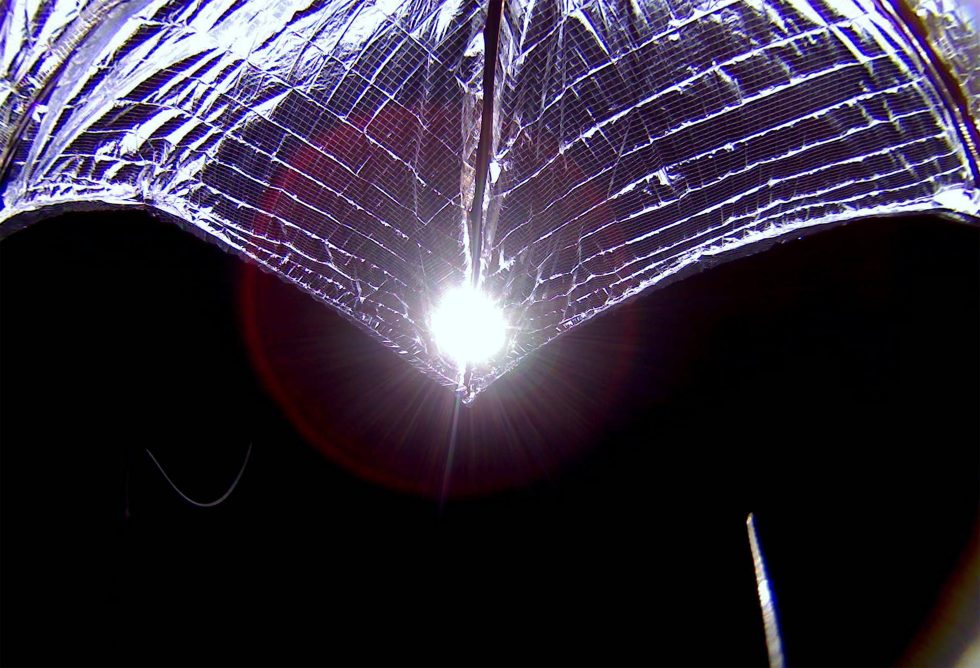-

This image was taken during the LightSail 2 sail deployment sequence on July 23, 2019 at 18:49 UTC. The sail is almost fully deployed here and appears warped near the edges due to the spacecraft's 185-degree fisheye camera lens.
For the last four decades, the Planetary Society has admirably sought to bring the people interested in space a little closer to the action, to give them a voice in space policy, and to advocate for more public spending on exploration. And the organization has also sought to become a part of the action—by flying its own missions. Now, it appears to have done just that.
On Wednesday, the organization co-founded by Carl Sagan in 1980 declared "mission success" for a small spacecraft launched on June 25 by a Falcon Heavy rocket, saying its small solar sail had raised the apogee of its orbit around Earth by 1.7km over the course of four days. "We completed its primary goal of demonstrating flight by light for CubeSats," said Bruce Betts, the LightSail 2 Program Manager and chief scientist at The Planetary Society.
A solar sail is a material in space with a bright, mirror like surface. When photons from the Sun hit the sail they do not have mass, but they do have momentum, which then transfer to the sail. If the sail is oriented properly, the continued bombardment by photons can move the sail. By changing the angle of the sail relative to the Sun, a solar sail can theoretically raise its orbit, and this was the test the Planetary Society set for itself with the LightSail 2 mission.
No comments:
Post a Comment